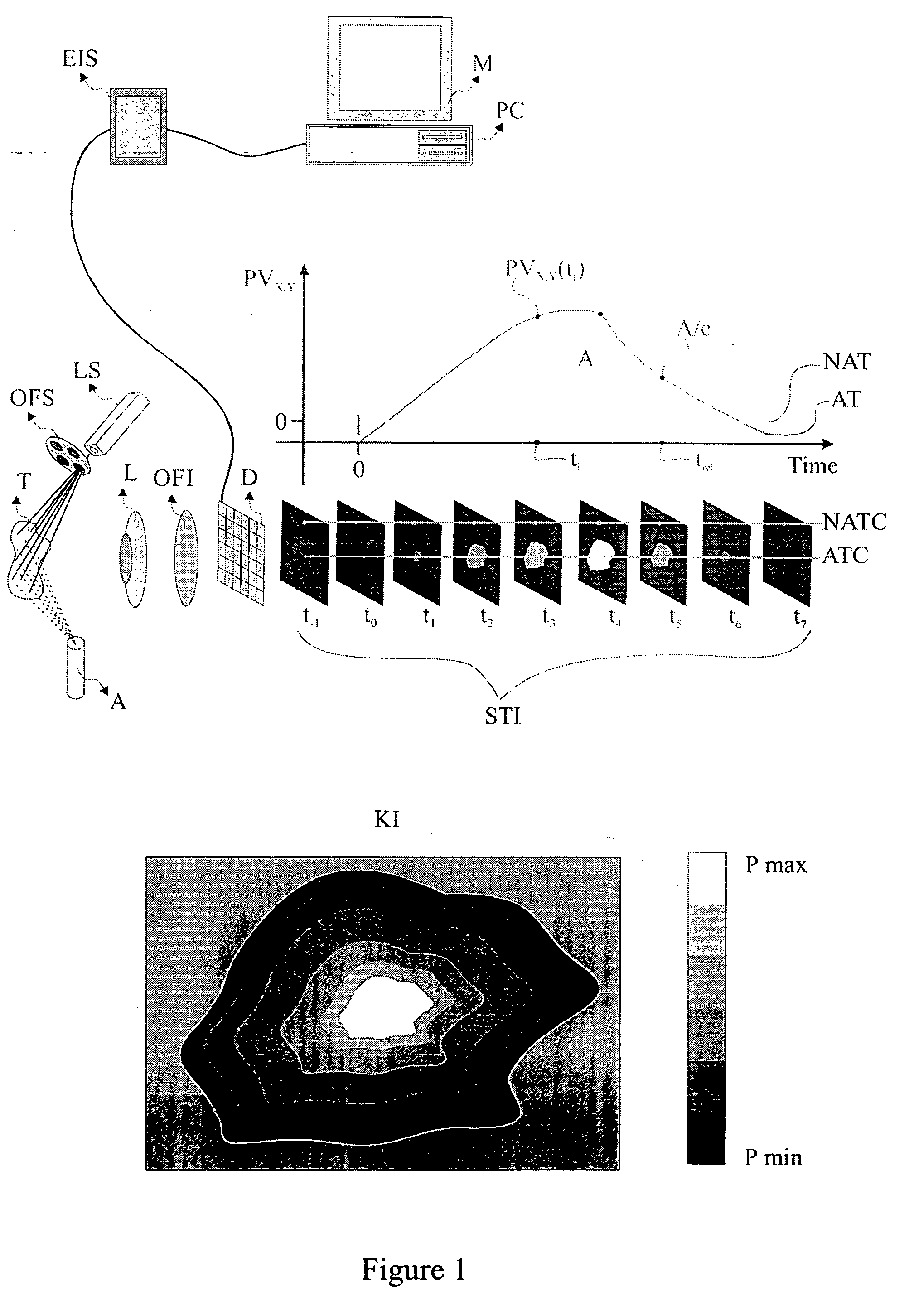In the opposite case the
lesion can progress in depth, resulting in the development of invasive
cancer and metastases.
At this stage, the possibilities of successful therapy are dramatically diminished.
The conventional clinical process of optical examination have very limited capabilities in detecting cancerous and pre-cancerous tissue lesions.
However,
biopsy sampling poses several problems, such as: a) risk for sampling errors associated with the visual limitations in detecting and localizing suspicious areas; b)
biopsy can alter the natural history of the intraepithelial lesion; c) mapping and monitoring of the lesion require multiple
tissue sampling, which is subjected to several risks and limitations; d) the diagnostic procedure performed with
biopsy sampling and histologic evaluation is qualitative, subjective,
time consuming, costly and labor intensive.
In other words the spectra carry convoluted information for several components and therefore it is difficult assess alterations in tissue features of diagnostic importance; and b) The spectra are broad due to the fact that a large number of tissue components are optically excited and contribute to the captured optical
signal.
As a result the spectra do not carry specific information for the
pathologic alterations and thus they are of limited diagnostic value.
The last has the capability of providing more analytical information, it requires however complex
instrumentation and ideal experimental conditions, which substantially hinder their clinical use.
It is generally known that tissues are characterized by the lack of spatial homogeneity and consequently the
spectral analysis of distributed spatial points is insufficient for the characterization of their status.
However, due to the insignificance of the spectral differences between normal and
pathologic tissue, which is in general the case, inspection in narrow
spectral bands does not allow the highlighting of these characteristics and even more so, the identification and staging of the pathologic area.
Furthermore, in several cases of early pathologic conditions, the phenomenon of temporary
staining after administering the agent, is short-lasting and thus the examiner is not able to detect the provoked alterations and even more so, to assess their intensity and extent.
In other cases, the
staining of the tissue progresses very slowly, with the consequence of patient discomfort and creation of problems for the examiner in assessing the intensity and extent of the alterations, since they are continuously changing.
The above have as direct consequence, the downgrading of the diagnostic value of these diagnostic procedures and thus its usefulness is limited to facilitate the localization of suspected areas for obtaining biopsy samples.
The main
disadvantage of these techniques is that they provide point information, which is inadequate for the analysis of the spatially non-homogenous tissue.
These techniques (imaging and non-imaging) however, provide information of limited diagnostic value, due to the fact that the structural tissue alterations, which are accompanying the development of the
disease, are not manifested as significant and characteristic alterations on the measured spectra.
Consequently, the captured spectral information cannot be directly correlated with the tissue
pathology, a fact which limits the clinical usefulness of these techniques.
Nevertheless they provide limited information for the
in vivo identification and staging of the
disease.
Nevertheless, the experimental method employed in the published paper is characterized by quite a few disadvantages, such as: The imaging
monochromator requires time for changing the imaging
wavelength and as a consequence it is inappropriate for multispectral imaging and analysis of dynamic phenomena.
The lack of
data modeling and
parametric analysis of the characteristics of the phenomenon
kinetics in any spatial point of the area of interest
restrict the usefulness of the method in experimental studies and hinder its clinical implementation.
The
optics used for the imaging of the area of interest are of
general purpose and are not comply with the special technical requirements for the clinical implementation of the method.
Clinical implementation of the presented
system is also hindered by the fact that it does not integrate appropriate means for ensuring the stability of the relative position between the
tissue surface and image capturing module, during the snapshot imaging procedure.
This reduces substantially the precision in the calculation of the curves in any spatial point, that express the
kinetics of marker-tissue interaction.
 Login to View More
Login to View More  Login to View More
Login to View More 


